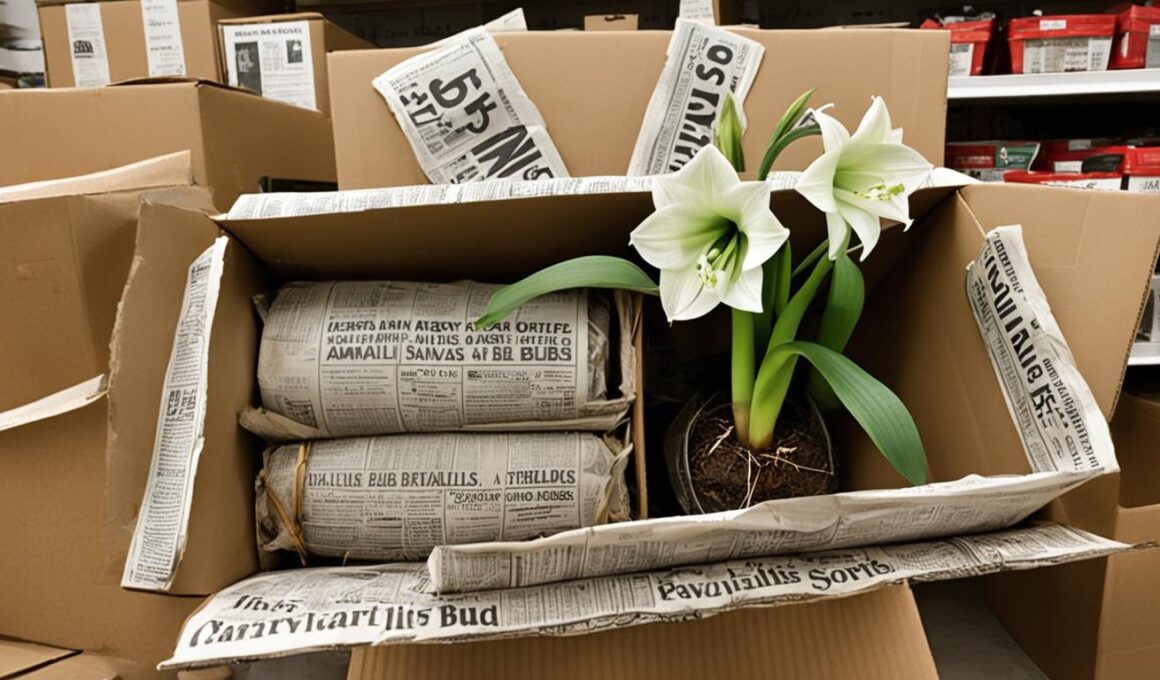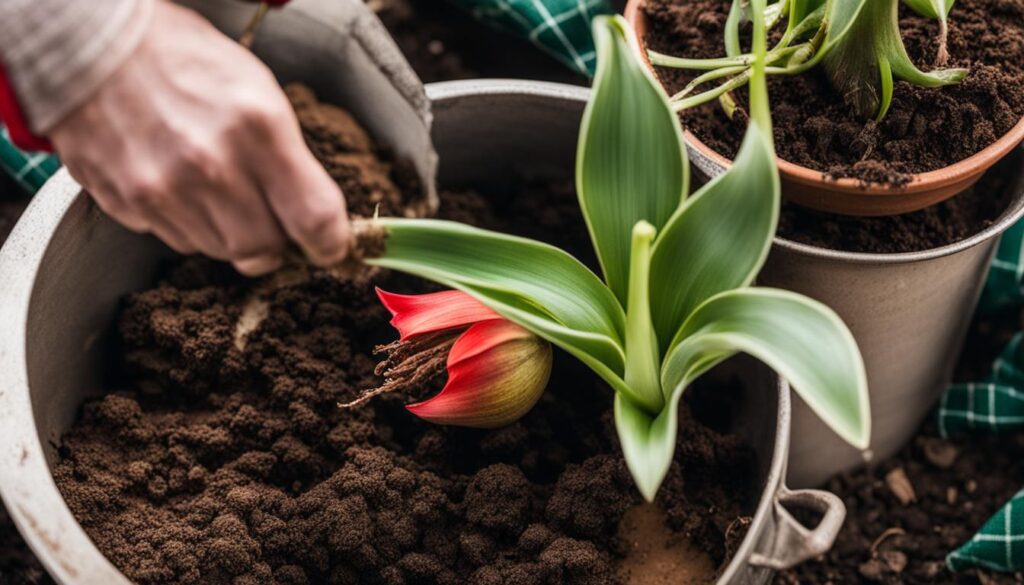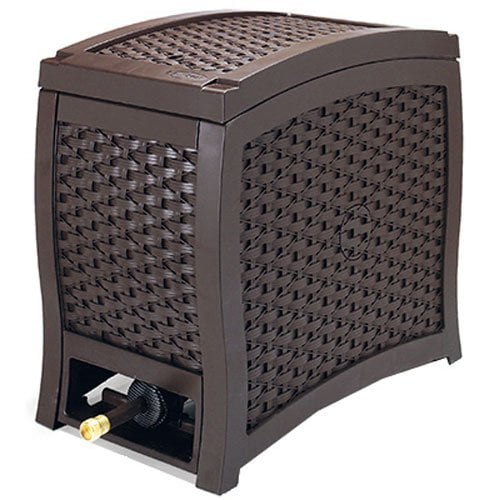Welcome to our guide on how to store amaryllis bulbs during their dormant period to ensure successful blooming in the following season. Taking proper care of your amaryllis bulbs is essential for their health and longevity. By following the right storage techniques, you can enjoy beautiful blooms year after year.
Amaryllis bulbs can be stored and cared for in two main stages: during their dormant period and when they are replanted and actively growing. In this section, we will focus on the first stage and provide you with step-by-step instructions on how to store your amaryllis bulbs properly.
After your amaryllis flowers have died and the stalks have been carefully trimmed, it’s time to prepare the bulbs for storage. Find a sunny spot where the bulb can photosynthesize and allow it to process nutrients. This will help ensure its vitality during the dormant period.
To keep the bulb healthy, make sure to water the soil when it becomes dry and feed the bulb with a balanced houseplant fertilizer on a weekly basis. As the leaves wilt, trim them back, and take appropriate action depending on whether the bulb is planted in the ground or kept potted.
For bulbs planted in the ground, dig them up carefully and follow the storage guidelines we will provide. If your bulbs are potted, you can simply leave them in the pot and proceed with the storage instructions.
Proper storage is vital for the amaryllis bulb’s dormant period. The bulb needs a cool, dry, and dark environment to rest and regenerate before the next blooming season. It is recommended to store the bulb for 8 to 12 weeks without watering or feeding.
By following these storage techniques, you can ensure that your amaryllis bulbs remain in great condition and are primed to produce stunning blooms when the time comes.
Transplanting and Outdoor Care
After storing the amaryllis bulbs, it’s time to bring them back out and transplant them outdoors for the next blooming season. This step is essential for their growth and rejuvenation. Follow these care tips to ensure the best results:
Choose a Suitable Location
Find a location in your garden that receives partial to full sun. Amaryllis bulbs thrive in bright sunlight, so choosing the right spot is crucial for their growth and blooming. Prepare the soil by digging a hole that is deep enough to accommodate the pot the bulb is currently in.
Transplanting Process
Gently remove the amaryllis bulb from its pot and place it in the hole you dug. Make sure the top of the bulb is level with or slightly above the soil surface. Fill the gaps around the bulb with soil, ensuring it is firmly packed. Water the newly transplanted bulb thoroughly to settle the soil.
Outdoor Care
During the summer months, provide regular care for your transplanted amaryllis bulbs. Water the plant whenever the top inch of soil feels dry. Additionally, feed the bulbs with a balanced liquid fertilizer every few weeks. This will provide the necessary nutrients for healthy growth and robust blooms.
Preparing for Dormancy
In late September or before the first frost, when the leaves start to turn yellow or dry up, it’s time to bring the plants back indoors. Cut off the dried leaves, leaving about an inch of the stem above the bulb. This preparation is essential before entering the dormancy period.
Winter Storage
Place the bulb in a cool area of your home, like a basement or garage, for 8 or more weeks. During this period, it’s important not to water the bulb or fertilize it. The cool, dry environment will facilitate dormancy, allowing the bulb to store energy for future blooming.
Replanting or Replacing
After the dormancy period, it’s time to replant the bulb. You can choose to either plant it in a new container or replace the soil in the current container. Water the plant once and place it in a sunny area. With time and proper care, new growth will emerge, and you’ll be rewarded with beautiful blooms.
Overwintering Options
When it comes to overwintering amaryllis bulbs, there are several options you can choose from to ensure their survival and future blooms. Here are some techniques you can try:
-
Option 1: Cool, Dark Storage
One method is to place the amaryllis plant in a cool and dark location starting in late September. It’s important not to water the plant at this stage. Allow the leaves to naturally turn brown, indicating the onset of dormancy. Once the leaves have withered, carefully follow the steps for bulb storage.
-
Option 2: Bright to Warm Transition
For those who prefer to keep seeing green throughout the winter months, you can opt to keep the amaryllis in a bright location during the autumn season. Once the cool requirement is met, typically after a few weeks, move the plant to a warmer spot. This option allows the amaryllis to continue its growth as a green plant until mid-winter.
-
Option 3: Christmas Blooms
If you’re looking to enjoy stunning Christmas blooms, you can bring the amaryllis into a warm, sunny location in early to mid-November and resume regular watering. Be prepared to repot the bulb or replace the top layer of soil if necessary to ensure optimal growth.
Regardless of the overwintering method you choose, it’s important to remember that amaryllis bulbs need a period of dormancy to thrive. By providing the right conditions and following these overwintering options, you can ensure the health and future beauty of your amaryllis bulbs.
Conclusion
Properly storing amaryllis bulbs during their dormant period is essential for their long-term health and blooming success. By following the right care tips, you can ensure beautiful blooms year after year.
First, it’s important to trim the stalks of the amaryllis after the flowers have faded. This helps redirect the plant’s energy back into the bulb. Allow the bulb to photosynthesize in a sunny spot, providing it with regular watering and a balanced houseplant fertilizer.
If you want to transplant your amaryllis outdoors, choose a suitable location that receives partial to full sun. After the summer months, bring the plants back indoors before the first frost, trim any dried leaves, and store them in a cool area. Replant the bulbs after their storage period, and water them once to initiate growth.
There are different options for overwintering your amaryllis bulbs, depending on your preference. Some gardeners prefer to keep the plants in a cool, dark location during their dormancy period, while others enjoy continuous growth by providing a bright location until mid-winter. If you want Christmas blooms, bring the plant into a warm, sunny spot in early to mid-November and resume watering.
By following these care tips and storing your amaryllis bulbs properly, you can enjoy their vibrant blooms for years to come. Remember to trim, photosynthesize, water, and transplant according to their specific needs. With the right conditions, your amaryllis will reward you with stunning displays season after season.
Can I Use Pressed Flowers in Glass as a Decorative Element for Storing Amaryllis Bulbs?
Pressed flowers can be a charming and unique way to enhance the appeal of glass containers in your home. When it comes to storing amaryllis bulbs, consider utilizing preserved pressed flowers for an exquisite decorative touch. By following the steps of how to preserve pressed flowers, you can create a visually striking display that beautifully complements the bulbs stored inside.










